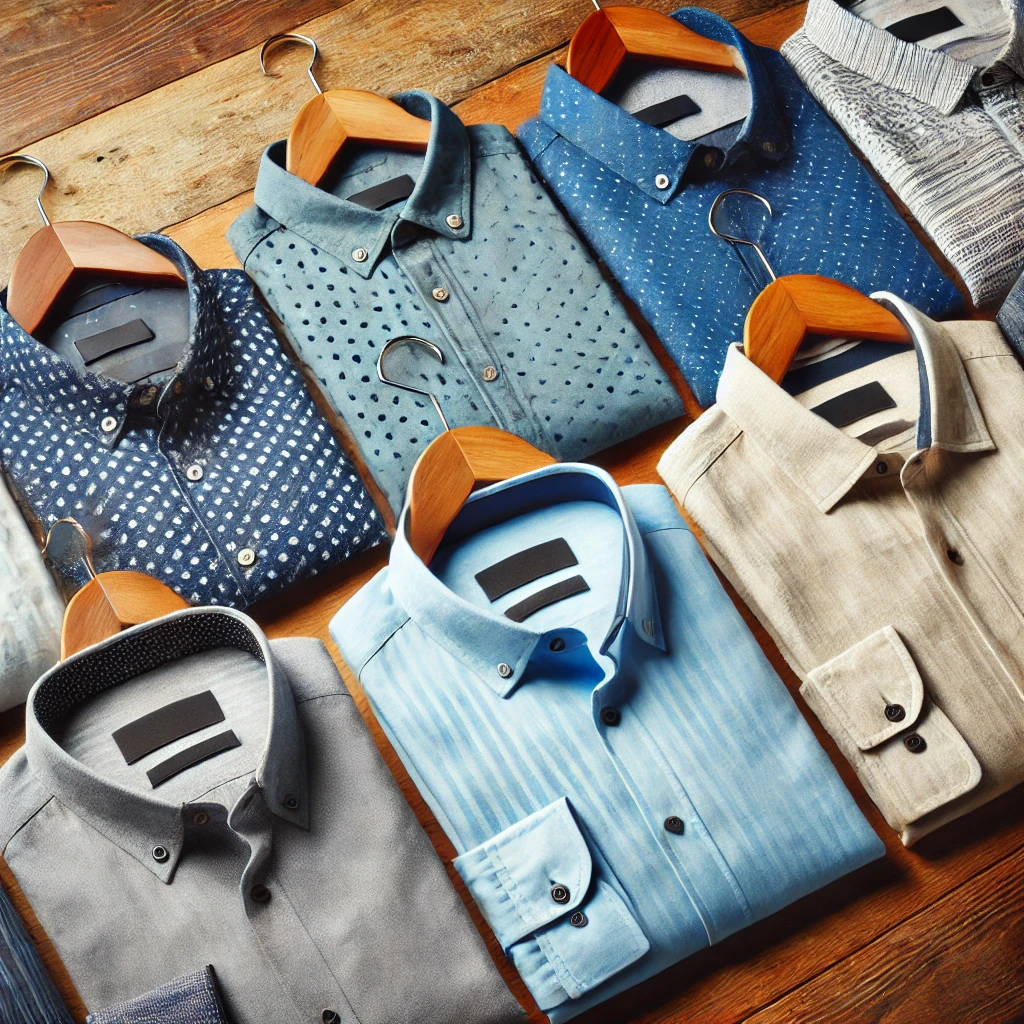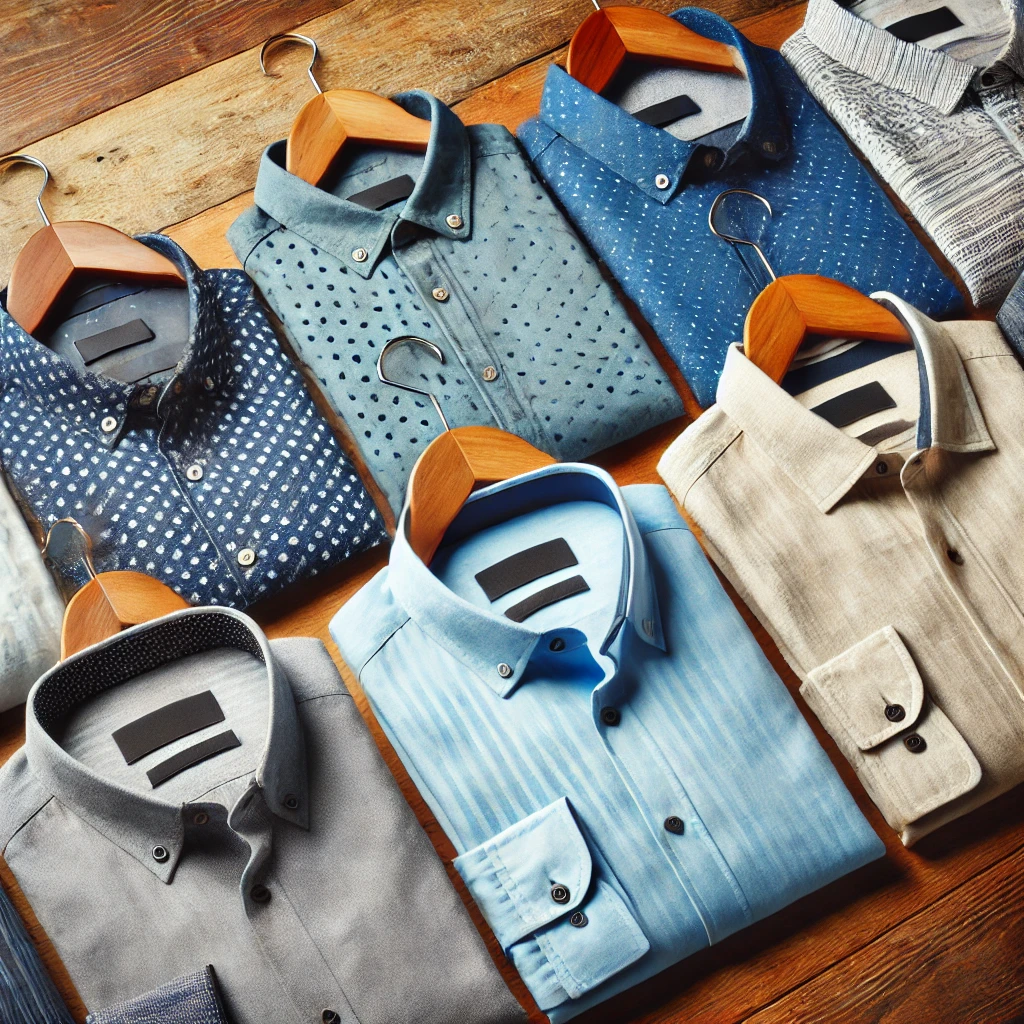
Shirts are a staple in both formal and casual fashion. However, wearing a shirt without understanding proper etiquette can result in a sloppy appearance or an inappropriate impression. To ensure you wear a shirt correctly, it is essential to understand basic fashion rules and etiquette.
For example, in business settings, the correct fit and tuck-in methods are crucial, while in casual settings, the combination of ties and jackets plays a key role. Additionally, maintaining and storing shirts properly is necessary for keeping them fresh and neat. This article covers fundamental shirt etiquette, scene-specific dressing rules, and coordination tips to help you dress smartly.
1. Understanding the Basic Rules of Wearing a Shirt
What is the Proper Fit for a Shirt?
The fit of a shirt greatly influences how stylish and polished you appear. No matter how expensive a shirt is, if it does not fit well, it will look unflattering. To choose the right size, consider the following points:
- Neck circumference: When the top button is fastened, one finger should fit comfortably between the collar and your neck.
- Shoulder width: The shoulder seams should align precisely with the edge of your shoulders.
- Sleeve length: The cuffs should reach your wrist bone when your arms are resting at your sides.
- Torso fit: The shirt should not be overly tight but should also avoid excessive looseness.
In professional settings, a well-fitted shirt enhances credibility and cleanliness, leaving a positive impression.
How Buttoning Styles Affect Your Appearance
The way you button your shirt significantly impacts the level of formality and overall impression.
- Fully buttoned (including the top button): Creates a formal look, suitable for business or formal events.
- Top button undone: Offers a relaxed but still professional appearance.
- Two buttons undone: Produces a more casual, laid-back vibe, great for weekends and informal occasions.
For instance, in business settings, leaving the top button undone can make you appear unkempt, so it is crucial to adjust buttoning according to the situation.
When to Tuck in or Leave a Shirt Untucked
Whether to tuck in your shirt or leave it untucked depends on the type of shirt and the occasion.
- Tucking in is appropriate for: Business settings, formal dinners, weddings, and professional environments.
- Leaving it untucked is suitable for: Casual outings, relaxed weekend styles, and beachwear.
Generally, longer shirts are designed to be tucked in, whereas shorter shirts are meant to be worn untucked. For example, wearing a business shirt untucked can look overly casual and inappropriate.
2. Proper Shirt Etiquette for Different Occasions
Basic Business Shirt Etiquette
In professional settings, wearing a well-maintained and properly fitted shirt is crucial. Here are some key rules:
- Always tuck your shirt in to maintain a polished appearance.
- Opt for neutral colors like white, light blue, or pastel shades.
- Ensure that the shirt is properly ironed, with no visible wrinkles.
Difference Between Formal and Casual Shirts
Understanding the difference between formal and casual shirts helps in choosing the right one for each situation.
- Formal shirts: Feature structured collars, stiff cuffs, and are made of high-quality fabric like cotton or poplin.
- Casual shirts: Often made from softer fabrics such as linen or flannel and may feature patterns and relaxed fits.
Choosing the Right Shirt for Each TPO
TPO (Time, Place, Occasion) is essential in determining your shirt selection.
- Business: A solid, light-colored dress shirt paired with a blazer.
- Casual outings: A patterned or textured shirt paired with jeans or chinos.
- Formal events: A crisp white shirt with French cuffs and cufflinks.
3. Coordinating Shirts with Ties and Jackets
Matching Tie Colors and Patterns with Shirts
Pairing ties with shirts requires a balance of color and pattern coordination.
- Solid-colored shirts: Work well with patterned ties, such as stripes or paisleys.
- Striped or checked shirts: Best paired with a solid or subtly patterned tie.
- Dark-colored shirts: Look sophisticated with contrasting or complementary tie shades.
Balancing Jackets with Shirts
Jackets and shirts should be well-coordinated to maintain harmony in an outfit.
- Dark suits pair well with lighter shirts for a professional contrast.
- Patterned blazers look best with simple, neutral shirts.
- Casual jackets like denim or leather should complement the shirt’s color.
4. Shirt Maintenance and Hygiene Tips
Proper Washing and Ironing Techniques
Maintaining shirts correctly extends their lifespan and keeps them looking fresh.
- Wash shirts in cold or lukewarm water to preserve fabric quality.
- Use a steam iron to remove wrinkles effectively.
- Hang shirts immediately after ironing to prevent creases.
Preventing Collar and Cuff Stains
Shirt collars and cuffs often accumulate dirt and oil. Here’s how to prevent and clean them:
- Pre-treat stains with a mild detergent before washing.
- Avoid excessive use of cologne or hair products near the collar.
- Rotate shirts regularly to prevent overuse of one particular piece.
5. Key Points for Successful Shirt Coordination
Understanding Color and Pattern Combinations
Matching colors and patterns appropriately enhances overall coordination.
- Neutral shirts (white, beige, gray) work well with vibrant ties and suits.
- Patterned shirts should be paired with simple, solid-colored accessories.
- Dark-colored shirts create a sleek look when paired with lighter trousers.
Conclusion
Understanding shirt etiquette and fashion rules is essential for achieving a polished look. By selecting the right fit, styling appropriately for different occasions, coordinating with accessories, and maintaining proper care, you can make the most out of your shirts. Whether dressing for business, casual outings, or formal events, mastering these guidelines will ensure that your shirts always enhance your overall style.



Comment